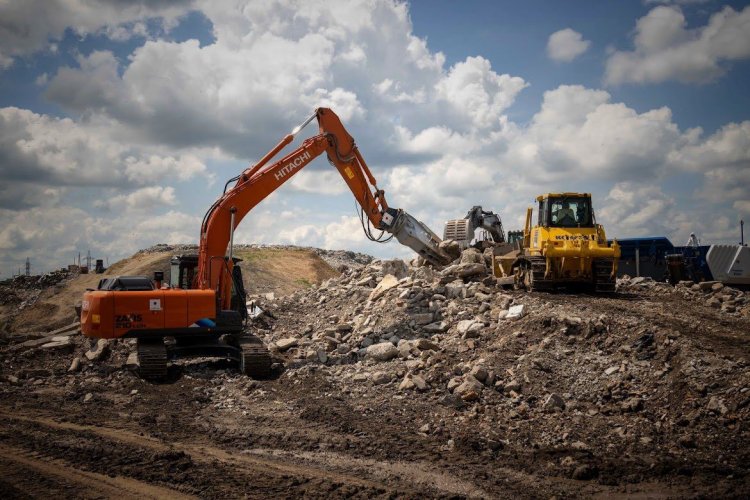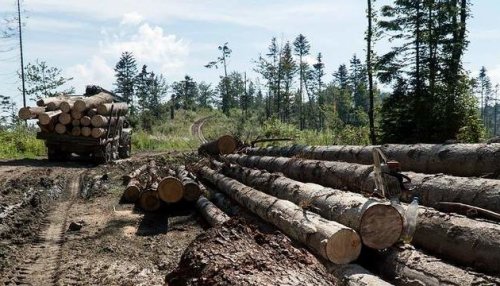The full-scale war has led to the emergence of enormous amounts of "demolition waste" – debris from buildings destroyed by the enemy. However, does the state know the exact amount of such waste? Where does it store it? Does it recycle it into new building materials for reconstruction and military construction?
To investigate the issue of accounting for and managing construction waste, the Association of Environmental Professionals (PAEW) approached the government and analyzed the data provided.
"The country is gradually learning to count the ruins in tons, but it hardly counts what happens to them next," is how the research by the association's founder, Lyudmila Tsyganok, and its vice president, Lyudmila Khomich, can be summarized.
Jumps and gaps in the data
Analysis of the data provided showed that the state is only in the process of developing a unified system for calculating waste from destruction. Here are some key markers:
- early 2023 – modest tens of thousands of tons of waste nationwide, with inconsistent accounting and missing data in several regions. According to the researchers, this appears to be the first attempt to “digitise the debris” after the traumatic 2022;
- summer–autumn 2023 – waste volumes reach 200–220 thousand t, rising sharply by several times. The highest volume is in the Kyiv region, which accounted for 170 thousand t of construction demolition waste. PAEW notes that during this period, “the system finally catches up with its own past.”
- end of 2023 – figures remain almost the same, with data growing steadily, without sharp spikes. However, a clear regional imbalance starts to become evident;
- January–June 2024 – the numbers gradually increase to 230–235 thousand t. Most of the registered waste is still in the Kyiv region (189 thousand t). The Chernihiv, Mykolaiv, and Donetsk regions also show growing figures;
- second half of 2024 – a dramatic surge in data. The regions finished recording their waste, bringing the total for the year close to 600 thousand t. More than half of this – 320–350 thousand t – comes from the Kyiv region.
Shortcomings in accounting methodology
- Inconsistency in data. The study conditionally divides regions into three groups – with massive and recorded destruction; with moderate, yet underestimated figures; and with data gaps, where accounting is either done formally or not at all.
- Different measurement units. State data is inconsistent between cubic meters and tons. Initially, both units were tracked, then mostly cubic meters; from the second half of 2024, some regions stopped reporting those and focused solely on weight.
All this prevents a comprehensive picture from emerging. This is not only about the total scale of waste nationwide. What appears to be just statistics actually has practical implications: waste accounting allows for calculating the required landfill area for storage or planning logistics.
Key information is missing
PAEW aimed to study how the state utilizes war debris. However, no data was provided by the government on crucial aspects for understanding demolition waste management policy. In particular, the following information is absent for analysis:
- waste composition with specified shares of inert materials, scrap metal, wood, and hazardous substances;
- storage locations. It is unknown where building debris is stored in the regions or what areas have been allocated for this purpose;
- reuse. There is no data on recycling and use in construction, particularly for the building of fortification structures.
“It is important for us not only to count the debris, but also to understand how it is (or is not) integrated into the context of military construction. If forest is being cut down where recycled materials could be used, if sand is being extracted from rivers where inert fractions from demolition could suffice, then this is not just about waste management, it is about strategic errors in recovery and defense,” the authors of the study write.
"Invisible" recycling technologies
Officially, the country seems to be actively looking for ways to recycle construction waste into new materials. PAEW talks about sorting complexes, crushing plants, and lines for the production of fillers.
However, the government is silent on this issue. It is unknown whether these technologies are working and what percentage of the total volume of waste they have recycled or are capable of recycling into new building materials.
“For us, this is not a reason to give up, but on the contrary, a reason to take further steps: to demand changes in reporting formats, to differentiate between ‘data not submitted’ and ‘no waste,’ to implement mandatory accounting by components and operations, to integrate the issue of waste use in fortification programs, and to make these data public and suitable for analysis,” PAEW writes.
EcoPolitic has previously reported on examples of the use of demolition waste. In Dnipro, it was recycled into fractional aggregate for construction. Recently, the potential of construction waste as a component of concrete mix has been confirmed in laboratory tests.





